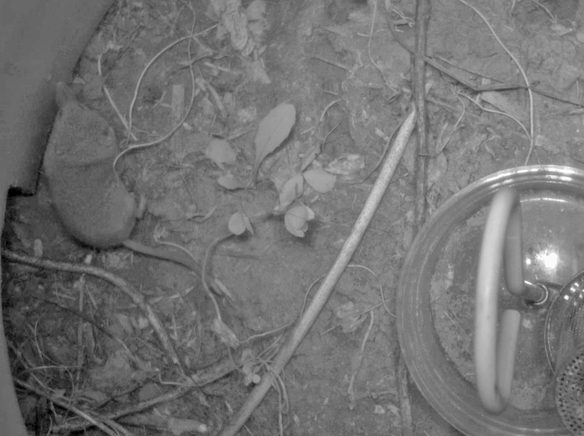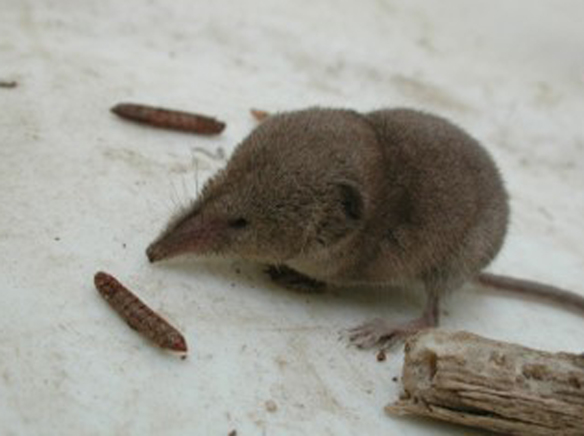
For the first time since 2004, researchers have observed a live Catalina Island Shrew. Conservancy biologists found this endemic species, listed as a Species of Special Concern in 1996 by the California Department of Fish and Wildlife, during an extensive remote camera research effort.

“We have been looking for the Catalina Island Shrew for years,” said Conservancy Wildlife Biologist Emily Hamblen, who added that three additional major research efforts have attempted to document the mammal since 2016 to no avail, despite more than 200,000 photos reviewed and 1,500 camera trap nights. “I thought, and really hoped, that they still existed somewhere on the Island. Animals are incredibly resilient, and it is amazing to see that they are still here.”
Between February and May 2020, the Conservancy deployed and rotated 7 remote camera traps specifically to detect small mammals at 28 locations. This is especially important due to the diminutive size and metabolism of the animal. An adult shrew measures at just 95mm (or approximately 3.74 inches) including their tail that makes up about a third of their total length, and weigh just 3.96 grams, equal to about 4 paperclips. The shrew’s high metabolism means that the insectivores can only survive between 5 and 23 hours without feeding.
“Generally, shrews need to eat every few hours, and some species of shrew eat up to two times their bodyweight each day,” said Hamblen. “This makes them challenging to capture safely because they need to eat so frequently. Remote camera traps are a noninvasive survey method allowing us to collect data without disturbing the animal.”
The remote camera is placed pointing down inside an upside down 5-gallon bucket. Bait is placed in the center of the buckets, with four small entrances cut into the trap. Though this is a very animal-friendly way to observe the species, it leads to a plethora of data.
More than 83,000 photos were collected through about 12 weeks of trapping. To date only a few thousand photos have been reviewed. It takes a keen eye to sort through the variety of animals that frequent the traps including alligator lizards, rattlesnakes, skinks, mice and rats. Even endemic ground squirrels and foxes have been known to poke their heads in.
Shrews prefer riparian and wetland areas that need protection. Cats are likely the biggest current threat to the Catalina Island Shrew.
Now that the shrew has been spotted once again, the Conservancy plans to continue efforts to encourage their survival.
“Our next step is to figure out the island-wide distribution and if they seem to prefer specific habitats, based on the locations where they have been observed,” said Hamblen. “Then, we can work to promote the health of those types of habitats and reduce risks to their survival.”
This type of critical conservation research is not possible without public support. These particular cameras were purchased in 2016 thanks to a donation from the Harold McAlister Charitable Foundation.
“The Conservancy is grateful to have strong supporters that care about the wildlife and nature on Catalina Island,” said Hamblen. “My first thought when we saw that image on the camera is that it is gratifying to see all of our hard work surrounding this species finally pay off – and thank goodness it’s not extinct!”
For more information about Catalina Island Conservancy’s conservation programs, visit CatalinaConservancy.org.










